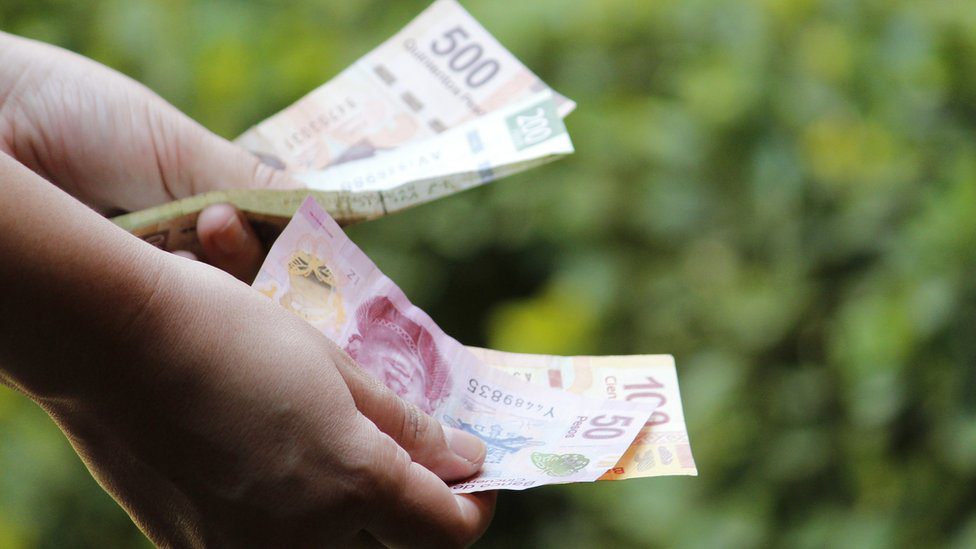Global Courant 2023-05-20 09:19:59
This rapid escalation adds to the accumulated increase that the “superpeso” brings since last year, driven by a greater flow of dollars to the country that arrives not only due to a growth in exports, remittances and foreign investment, but also because the High interest rates work like a magnet for investors.
Although there are many emerging currencies that may be attractive to investors in the forex market, the Mexican peso has one big advantage.
“It is the most liquid currency in Latin America,” says Gabriela Siller, director of Economic Analysis at Banco Base, in dialogue with BBC Mundo.
A liquid currency is one that can be easily bought and sold on foreign exchange markets, gives investors confidence, and is traded in large volumes.
The most liquid currency in the world is the US dollar. It has the largest purchase and sale volume in international markets, a characteristic that has allowed it to maintain its dominant position.
Getty Images Liquid currencies are the most traded in international markets.
At the other extreme, the less liquid currencies are those that are less desirable, such as those that come from countries with high inflation, where paper is worth less every day and most people want to get rid of them.
In Latin America you can mention the Venezuelan bolivars or the Argentine pesos.
Therefore, the fact that the Mexican peso is very liquid is a good sign. A liquid currency has more possibilities of appreciating than one that is traded little in the markets because it is not desired.
In this context, the Mexican peso is currently the most liquid currency in Latin America because it is bought and sold more than the rest of the region’s currencies, according to data from the Bank for International Settlements (BIS). An international organization that brings together the central banks of different countries.
The agency points out that the volume of transactions with Mexican pesos globally increased 3% in the last three years and that the currency ranks 16th in the list of most traded currencies on the planet.
Getty Images The volume of transactions with Mexican pesos globally increased 3% in the last three years.
This good position is explained by several reasons. The first is that in Mexico the currency can rise and fall freely (what is known as a free float regime) and there are practically no interventions by the monetary authority.
The second is that the Mexican peso can be traded 24 hours a day, while other currencies, such as the Brazilian real, have time restrictions.
And the third is related to trust. “Investors are certain of the country’s macroeconomic stability and the reputation of Banco de México, which is autonomous from the government,” says Siller.
What is the reason for the rise in the peso against the dollar?
The bullish race of the “superpeso” against the dollar has been pushed for many reasons. Here we tell you some of them:
Greater income of dollars to Mexico. This entry is mainly due to the increase in exports to the United States, although it is also explained by a strong increase in direct foreign investment and by a rise in remittances sent by Mexicans living in the US to their families. across the border. Big difference in interest rates. The difference between the interest rate in Mexico (currently at 11.25%) and that in the United States (5.25%) is six percentage points that attract investors to achieve greater profitability in the Mexican market. A redistribution of money flows after the start of the war in Ukraine. Those who invest in bonds, that is, buy debt, have less preference to buy debt in Asia. And the attractiveness of the liquidity of the Mexican peso for investors. This liquidity allows them to quickly enter the market to buy pesos and gives them the expectation that they can exit quickly if they prefer other opportunities.
Will it keep going up?
Some analysts maintain that since interest rates in Mexico reached a very high level, it is most likely that the Central Bank will not continue raising them.
That may encourage some investors to go to other markets in search of higher returns.
Getty Images The future of the peso is related to the slowdown of the US economy.
From another perspective, estimates point to a drop in the rate of growth of the US economy in the coming months.
“An economic slowdown is coming in the United States,” says González.
If growth in the world’s leading economy decreases, that contraction directly affects Mexico and “may generate a certain depreciation of the Mexican peso,” he adds, probably starting in the second half of this year.
“It would not be a significant depreciation, but it will no longer continue to rise,” he says.
Other experts such as Siller project that if current conditions continue, “the peso still has room for appreciation”, but it all depends on how the US economic slowdown is.
If the slowdown is deeper than expected, then fewer dollars could flow into Mexico. And as there are fewer dollars on the market, its price rises.
Bad economic news in the US typically increases investors’ risk aversion and encourages them to seek shelter until the storm passes.
Thus, when the sky fills with clouds, big capital prefers to get out of emerging markets and protect themselves in the most solid currencies.
We’ll see what happens.
Now you can receive notifications from BBC Mundo. Download the new version of our app and activate them so you don’t miss out on our best content.




